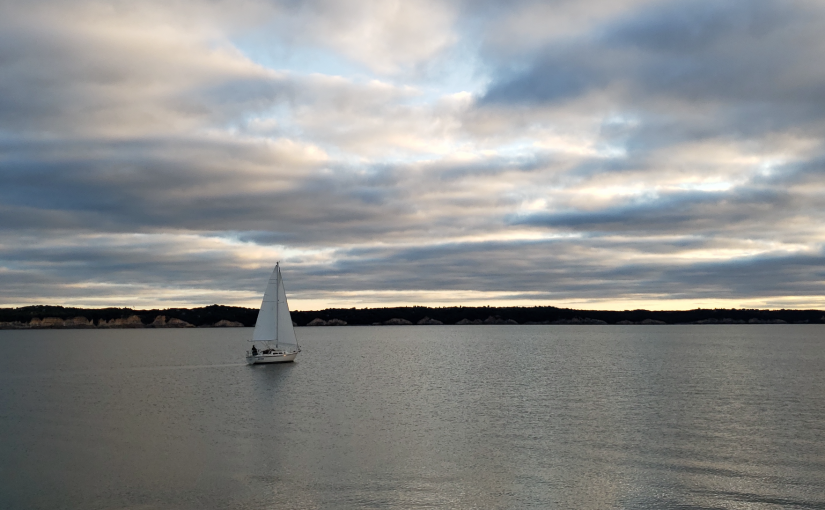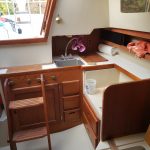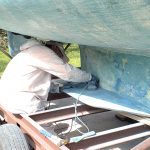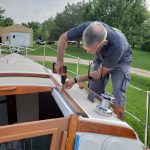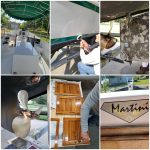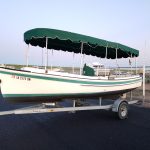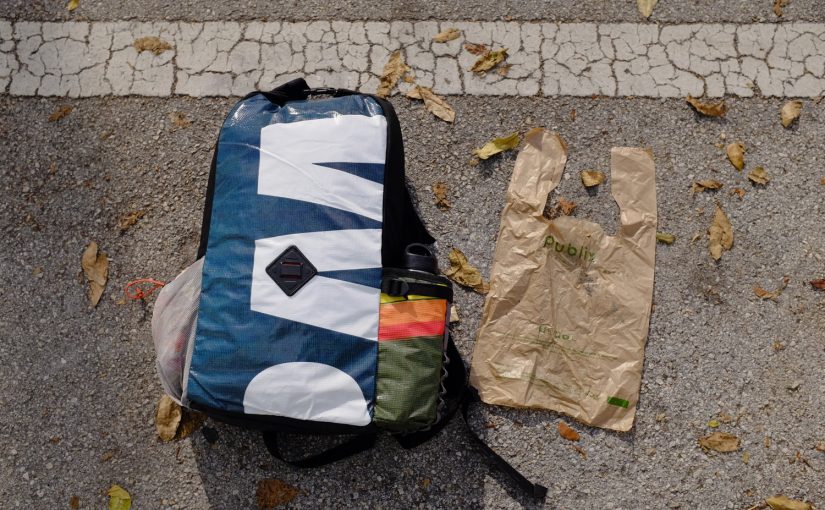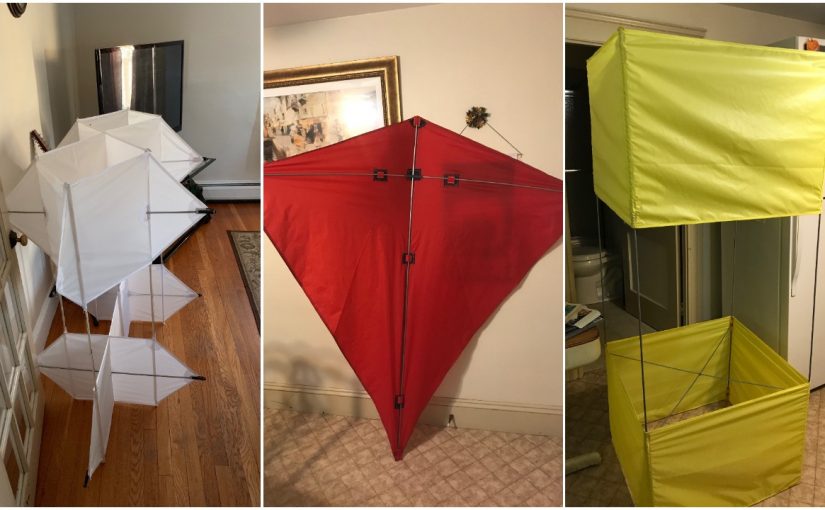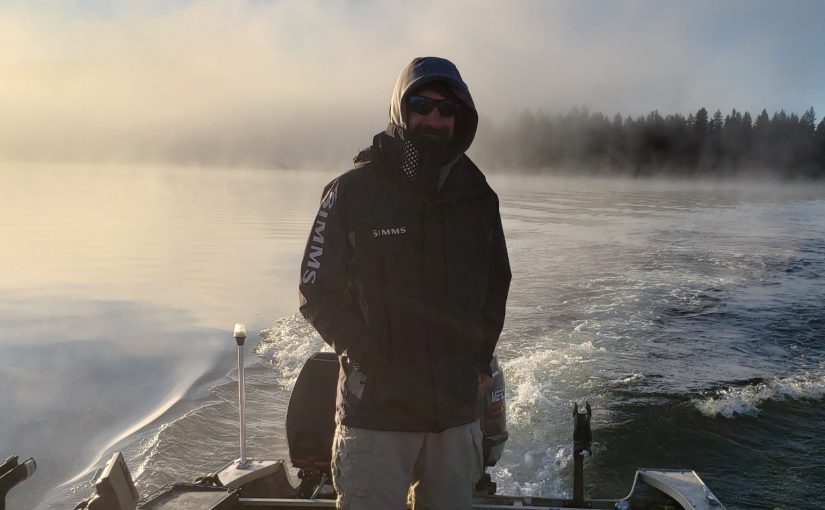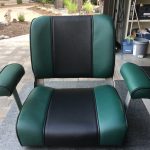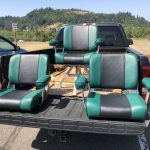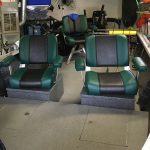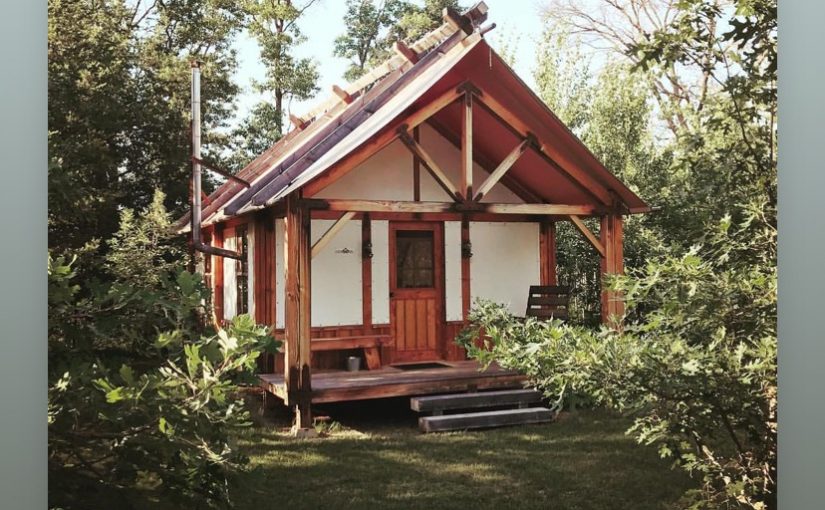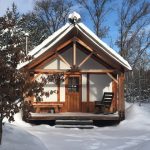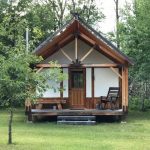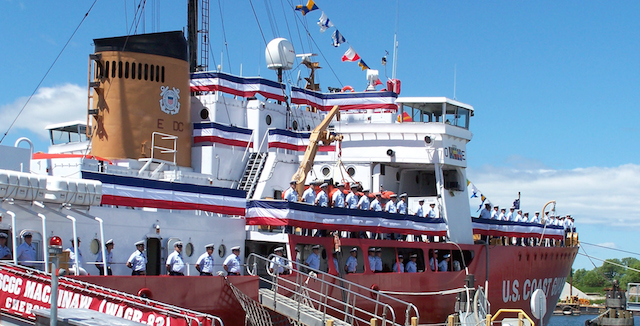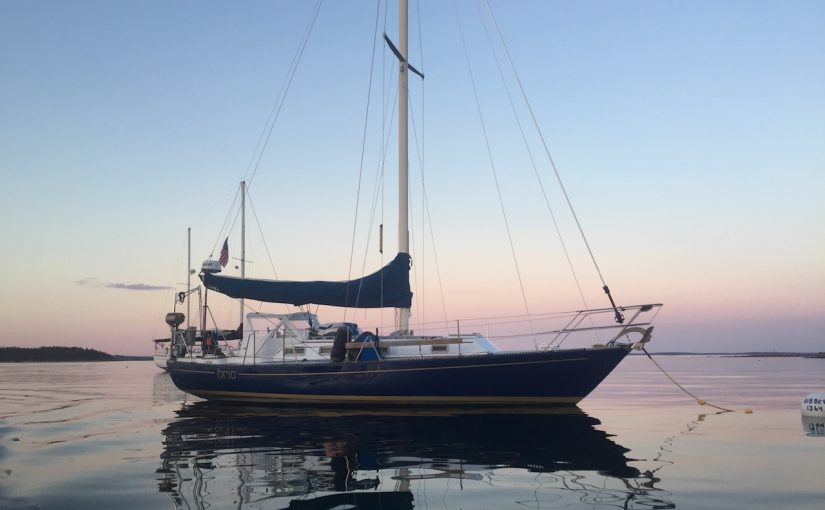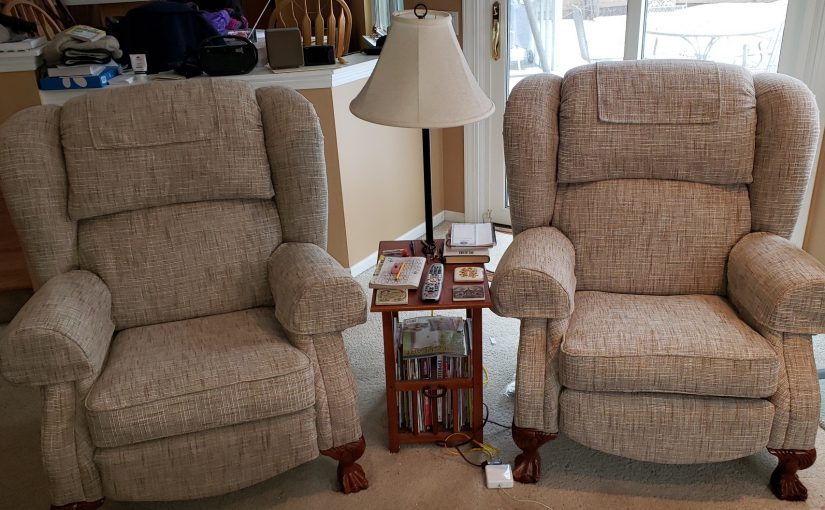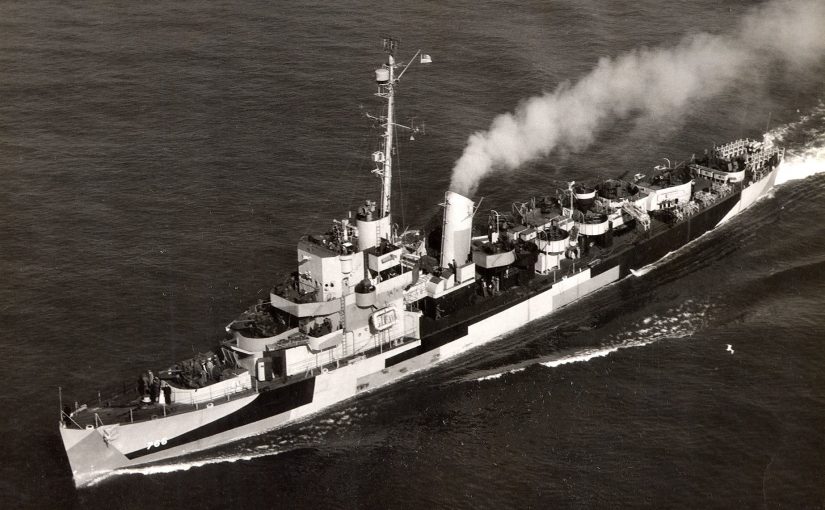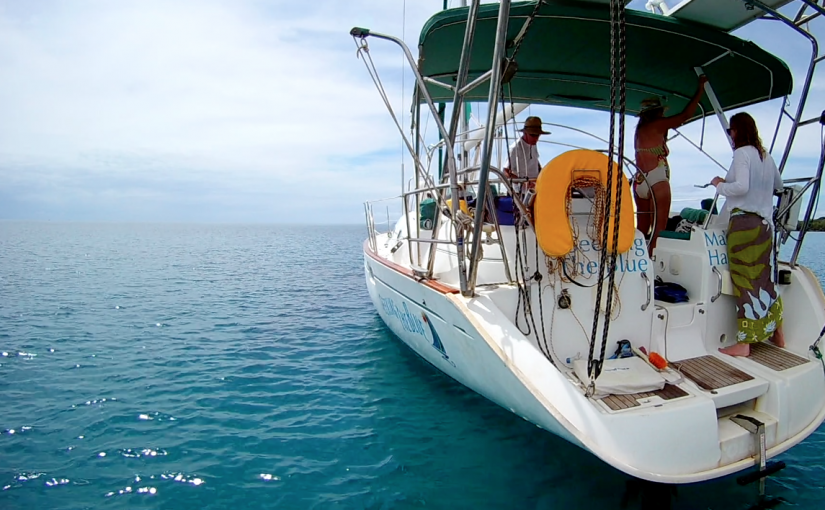Jeanie Shafer is a jack-of-all-trades. Not only has she been sewing for 30 years, but she’s also a creator in many mediums. Between painting, pottery, sculpture, nature photography and even cake decorating, her passion for creative expression cannot be tamed. This artistry also carries over into her love of boating, which is how she became acquainted with Sailrite® and embarked on her most ambitious DIY adventure yet!

Jeanie and her husband, Tim, have been enjoying life on the water for 35 years. No stranger to buying boats, the pair have owned numerous boats, ranging in size from 16 to 35 feet — all found and purchased the traditional way. That was until their most recent boat, a 27-foot Catalina.
In Jeanie’s hometown, the 27-foot Catalina had been unused and was no longer on the water as her current owner was no longer interested in sailing. There she sat in her rented spot in plain sight so that many townsfolk knew both boat and owner. One morning, the boat had been moved, and much to everyone’s surprise, it was not done by the owner. The boat’s sudden disappearance remained a mystery until later that summer when someone spotted it hidden not far from where it had been stolen.
Jeanie went on to recount the details of the discovery, “Whoever had stolen the boat had been a very busy beaver! She had been stripped of all hardware inside and out. The name had been removed and her old numbers had been replaced with numbers registered to a different boat. The mast had been unsuccessfully taken down and had crashed down onto the bow. Newly covered cushions were damaged and the brand-new sails that had only been used one summer were missing. The boat showed all signs of being lived in all summer!”
Luckily, the boat’s hull was undamaged and the outside deck and cockpit were in very good shape as well as the teak below deck. The only thing that remained in the cabin was the head, sink and stove. Jeanie and Tim eventually decided that they wanted to purchase the wayward boat, and so the work began!
The first step was deciding on a name. Would it be “Phoenix” because the boat was rising out of its old ashes? No, that was too popular among boats. Jeanie and her husband finally agreed on “Shattered” as a reminder of what the boat had once been, but wasn’t any longer. It was also a nod to The Rolling Stones song of the same name.
Even before Shattered needed new sails (among many other things), Jeanie had a 35-foot Catalina requiring a new dodger. To accomplish this, a heavy-duty, portable sewing machine would be of the utmost importance. After ample research, this lead to the purchase of the Ultrafeed® LSZ. “Sailrite not only had the machines but seemed to be a sewist and boater’s paradise for fabric, hardware, lines and tools! We discovered many items that we didn’t know existed and these products would soon make our DIY lives easier. The detail in your how-to videos and your personnel’s prompt willingness to share their expertise shines above all. I could never have made these sails without [Sailrite Sail Designer] Jeff Frank being able to help me!”

“Please know that all of these attributes in your company keep people like myself returning for life, and we share our positive experiences with others who then call upon Sailrite for their needs. It’s a marvelous domino effect!”
After repairing her own dodger, Jeanie was able to start a marine repair business on her dock that quickly spread to the entire marina! Canvas repair businesses in the area were shutting down, driving Jeanie’s customer base up even further. Before long, the projects became so massive and so frequent that Jeanie couldn’t sew them on her dock or kitchen counter. In response, Tim built her a sewing table molded after Sailrite’s loft tables — a huge undertaking that took up the entire spare bedroom in her basement!
Since then, Jeanie’s been a creative machine, churning out project after project. Her projects ranged from dodger, canvas and glass repair to a total sail pack and bimini revamp. With the help of Sailrite’s tools, supplies and instructional videos, the list goes on to include:
- Bimini repairs
- New winch covers
- Topside window covers
- Custom helm covers
- New sail cover for Shattered
- Main and headsail from Sailrite’s custom designed sail kits
- And much, much more!
What lies ahead for Jeanie and Tim Shafer? They’ve already planned for a plethora of other DIY projects to revamp Shattered. More recently, the two added another boat to their collection, a rare 21-foot Martini — a model that’s no longer in production. And with the winter months rounding the corner, the projects requiring Sailrite materials and instructions just keep coming. On the agenda is a new companionway screen, track curtains, window coverings, lifeline covers and cushion covers with Moisture Prevention Underliner beneath them to battle the Florida humidity where the boats will be sailing.
In short, it seems as though Jeanie and her Ultrafeed are ready to take on the DIY world and anything that life throws at them, and we’re happy to be part of the creative process. Reminiscing on her past projects, Jeanie gushed, “The best part of making your own DIY projects is the learning process! The “aha” moment when you get it and feel more confident in the project. And then, of course, the satisfaction when the end result looks great!” We can’t wait to see what you sew next, Jeanie.
Who We Are
Sailrite is your one-stop DIY shop! We are a passionate crew of do-it-yourselfers who strive to equip you with the supplies and how-to knowledge you need to tackle your next project. Do you want to learn upholstery, leatherwork, canvaswork, hobby sewing, bag making or more? We have the fabric, tools, hardware, sewing machines and notions you need to master any DIY. And even if you’ve never sewn before, our tutorials and how-to videos are designed for beginners and experienced crafters alike.
Start your DIY journey today: www.sailrite.com

